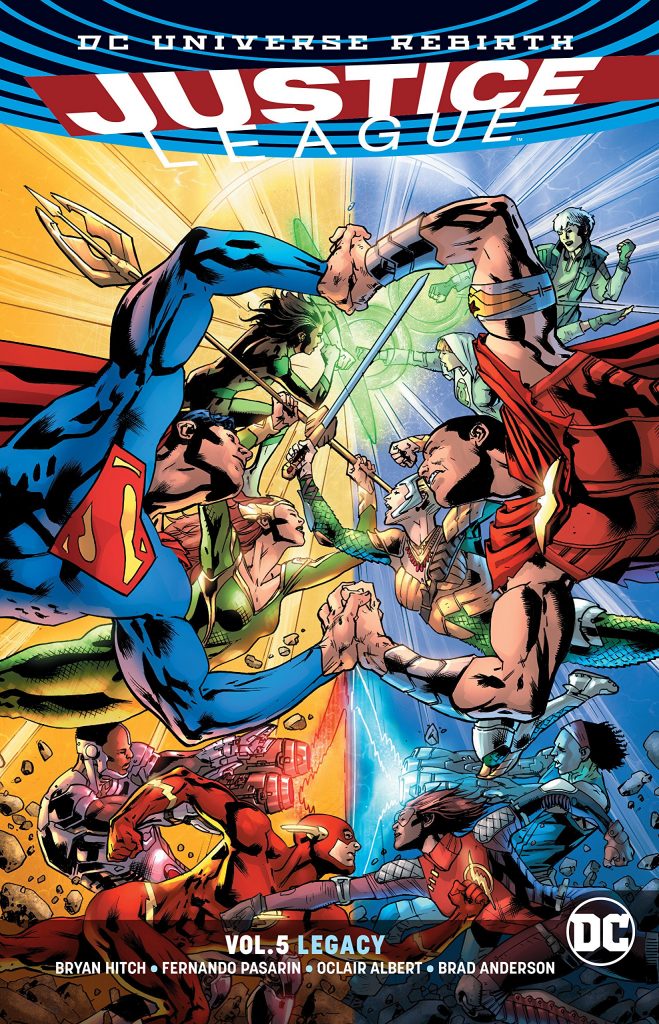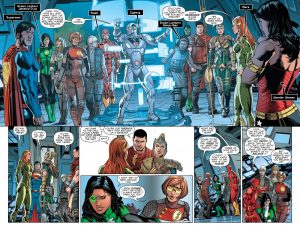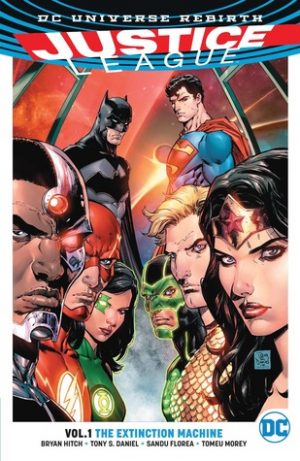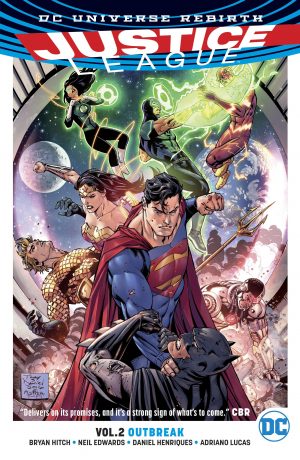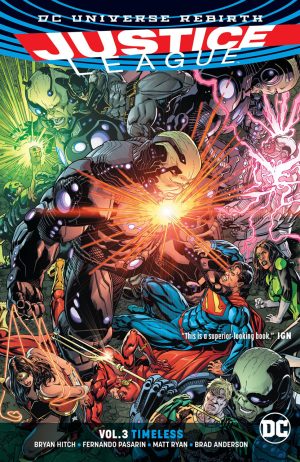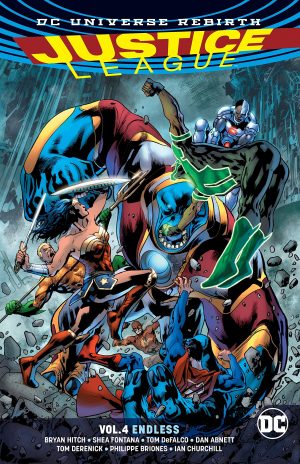Review by Ian Keogh
In every single one of Bryan Hitch’s Justice League collections it’s mentioned that the Justice League are due to face an unbeatable foe, always very vague on the details, but someone or something even entities capable of switching planets about consider with dread and foreboding. Frankly, it’s become tiresome, and is finally resolved in Legacy, in which the children of the Justice League pop back 25 years to accuse their parents of neglect and dereliction of duty.
As with almost every one of Hitch’s stories, there’s good and there’s bad. Straddling the fence between the two are items not spelled out, leaving the readers to join the dots, the Justice League’s computer system being an example of that. It leaves questions unanswered, however, and some of those definitely drop into the bad slot. Seemingly limitless energy sources called Infinity Stones have played a significant part in previous volumes, and not knowing what they were in the course of an ongoing story is fine. Not explaining what they are when the story finishes reduces them to plot conveniences. Once again, editors, are you there? That’s not the only lapse.
Thankfully, for once, the good significantly outweighs the bad. A discussion in Timeless foreshadowed what plays out here terrifyingly, the reason for the menace, eventually known as the Darkness, manifesting in the present day, and the different characters applied to the Justice League’s children. In creating villains for the series Hitch has consistently prioritised the visually dull, fostering the impression that he’s deliberately avoiding donating new characters that would end up owned by DC, but the likes of Hunter, Cube, and Serenity are viable variations on the current members. Whether visually designed by Hitch or artist Fernando Pasarin, they’re distinctive and functional.
Pasarin’s previous Justice League outing on Timeless was the best of Hitch’s run, and his art for Legacy is again first rate, expansive when needed, but equally effective when he’s supplying the dramatic moments dependent on personalities. The menace itself has limited visual potential, but Pasarin draws hell out of what it prompts.
The Darkness is another of Hitch’s nebulous villains, an entity represented by tendrils of black ink stretching across panels, infecting and perverting all they contact, but crucially the Darkness can’t possibly live up to the expectation Hitch has been building. That’s disappointing, but the clever way the children are both cause and redemption, and the secrets revealed during the course of the story make up for it. Forgetting about the not always proficient scene setting of Hitch’s earlier work, and read in isolation Legacy comes across as an exciting story with several surprises, great superhero art and a viable menace. That’s the way to look at it.
This is Hitch’s Justice League finale, the series continuing with The People vs. the Justice League.
